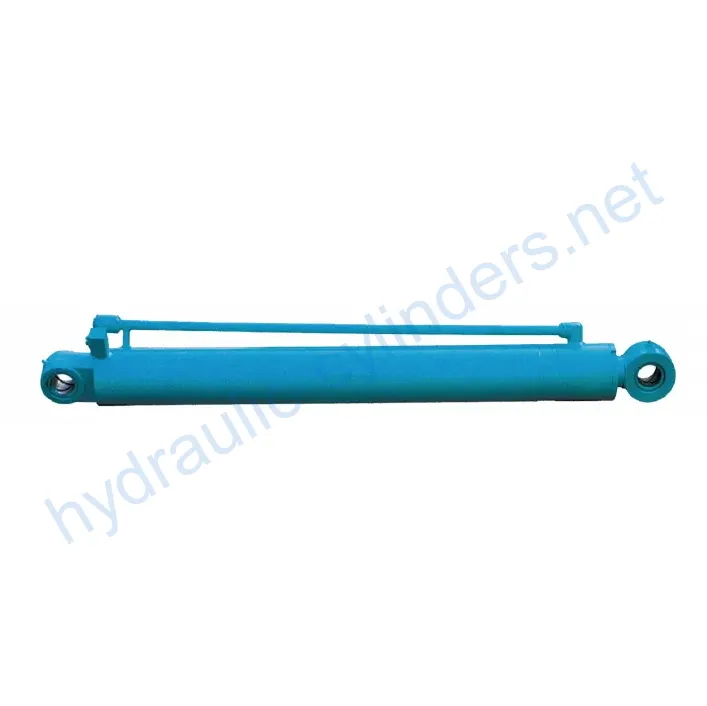Arm Cylinder For John Deere E360LC
As one of the hydraulic cylinders manufacturers, suppliers, and exporters of mechanical products, We offer hydraulic cylinders and many other products.
Please get in touch with us for details.
Mail:sales@hydraulic-cylinders.net
Manufacturer supplier exporter of hydraulic cylinders.
Arm Cylinder For John Deere E360LC
Introduction
The arm cylinder, also known as the hydraulic cylinder, is a specialized cylinder designed to provide linear motion and power to the arm of various machinery, such as excavators, cranes, and robotic arms. It plays a vital role in hydraulic systems, allowing for effective movement and control of additional tools or attachments. These cylinders not only enable smooth motion but also withstand heavy loads, ensuring efficient operation and reliability of the machinery under various working conditions.

Features
- High Performance: The arm cylinder delivers powerful linear motion and force, ensuring high-performance capabilities for the machinery arm.
- Precise Control: Through the hydraulic system, the arm cylinder enables precise motion control, allowing for flexible and accurate operation of the attached tools.
- Durability: Arm cylinders are typically made of high-strength materials, providing excellent wear resistance and corrosion resistance, making them suitable for long-term use in harsh environments.
- Multi-functional Adaptability: These cylinders can be widely used in various types of machinery, including excavators, cranes, and robotic arms, adapting to different working requirements.
- Ease of Maintenance: Designed with ease of maintenance and replacement in mind, these cylinders make regular inspection and upkeep more convenient, reducing equipment downtime.

Applications
The arm cylinder finds applications in various industries and sectors:
- Construction Engineering: In excavators and cranes, the arm cylinder controls the movement of buckets or booms, facilitating earthwork operations, material handling, and structural installation.
- Manufacturing: In automated production lines, the arm cylinder enables the motion of robotic arms for assembly, welding, and material handling processes, improving production efficiency and accuracy.
- Agricultural Machinery: In agricultural machinery such as harvesters and planters, the arm cylinder controls the movement of operating arms for tasks like seeding, fertilizing, and harvesting.
- Mining: In mining equipment, the arm cylinder controls the arm movement for mining and material handling operations.
- Logistics and Transportation: In forklifts and handling robots, the arm cylinder controls the lifting and movement of forks, enabling material handling and stacking.
Design Considerations and Selection Criteria
When it comes to designing arm cylinders, various considerations and selection criteria play a crucial role:
- Bearing Capacity: The cylinder’s ability to withstand loads and pressures is a key design consideration.
- Sealing: Various sealing components, such as piston seals and rod seals, are used to ensure proper sealing. Materials like polyurethane and nitrile rubber are chosen for their wear-resistant properties.
- Durability: The cylinder body and threaded ends undergo precise treatments to enhance wear resistance.
- Safety: Safety features are integrated into the design to ensure secure operation and prevent accidents.
- Maintainability: Regular lubrication with hydraulic oil and easy access for inspection and maintenance are considered during the design process.

Sealing and Lubrication
The arm cylinder utilizes various sealing components, such as piston seals and rod seals, made from wear-resistant materials like polyurethane and nitrile rubber. The cylinder body and threaded ends undergo precise treatments to enhance wear resistance. Regular lubrication with the appropriate amount of hydraulic oil ensures proper lubrication and smooth operation.
Regular Inspection and Preventive Maintenance
To ensure optimal performance and longevity, regular inspection and preventive maintenance are essential. The following measures should be taken:
- Check the cylinder for any signs of leakage, damage, or wear.
- Inspect and replace seals or other components as necessary.
- Keep the cylinder clean from dirt and debris.
- Monitor hydraulic fluid levels and quality, and replenish or replace as needed.
- Follow manufacturer guidelines for maintenance intervals and procedures.
Proper Installation Guide
Correct installation of the arm cylinder ensures optimal performance and safety. Follow these steps:
- Ensure the mounting surface is clean and free from debris.
- Align the cylinder and secure it using appropriate bolts or fasteners.
- Tighten the bolts to the recommended torque specifications.
- Connect hydraulic hoses or pipes following the manufacturer’s instructions.
- Test the cylinder for proper operation before putting it into full use.

Safety Considerations and Environmental Factors
When using the arm cylinder, it’s important to prioritize safety measures. Safety precautions should be taken to prevent accidents and ensure the well-being of operators and bystanders. Additionally, environmental factors such as temperature and humidity may affect the performance and lifespan of the cylinder, and appropriate measures should be taken to mitigate these effects.
Fault Diagnosis and Common Issues
Understanding potential faults and common issues can help in diagnosing and resolving problems effectively. Some common faults and their troubleshooting methods include:
- Leakage: Inspect seals and connections, replace damaged seals, and ensure proper tightening.
- Slow or Jerky Movement: Check for low hydraulic fluid levels, restrictions in fluid flow, or issues with control valves.
- Unusual Noise: Investigate potential sources of noise, such as damaged components or insufficient lubrication.
Preventive measures can also help minimize potential issues:
- Follow recommended maintenance intervals and procedures.
- Regularly inspect the cylinder for signs of wear or damage.
- Ensure proper lubrication and fluid levels.

About Us
We are a professional manufacturer specializing in replacement hydraulic cylinders. With a wide range of products, we have become one of the leading manufacturers and wholesale distributors in the domestic and international markets. Our commitment to excellence and industrialized production management strategies in our advanced manufacturing workshop enables us to continuously improve our technical expertise and production efficiency. By introducing high-end digital manufacturing equipment and professional testing systems, we optimize our manufacturing platform and perfect our product quality control processes, showcasing our strong innovation capabilities. Our goal is to meet diverse customer needs with efficiency, precision, and high-quality products.


Author: lyl.
Take a Tour of Our VR Factory:
Take a tour of our VR factory with the following
Hydraulic Cylinder Application:


